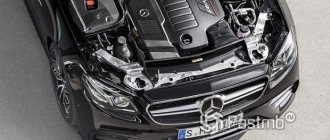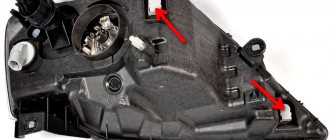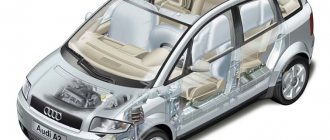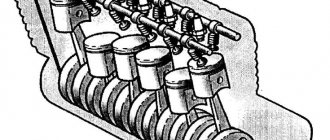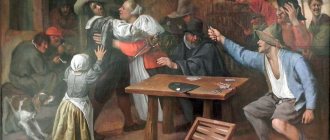This name is known to every person who is at least to some extent interested in cars. Carl Friedrich Michael Benz is considered to be the inventor of the automobile. He received the world's first patents for a two-stroke gasoline engine, a battery-powered ignition system, a spark plug, an accelerator, a carburetor, a clutch, a gearbox, a water cooling radiator - in short, for all the main components of a car.
From a workshop to a global concern
Karl Benz showed his talent as an engineer and inventor very early, but his professional career was not at all a matter of course. He was born into a poor family. His father, a locomotive driver, died when Karl was only two years old. Thanks to the efforts of his mother, excellent grades from Karl himself and a state scholarship, he graduated from the Polytechnic University at the age of 19, then, after seven years of working at various enterprises, he created his own company. Actually, at first it was just a masterpiece.
Karl Benz's first car
The first car to become a production model was patented in January 1886. Patent number 37435 was issued for a three-wheeled self-propelled carriage. The history of the world automotive industry began with this tricycle. Benz equipped his invention with a gasoline internal combustion engine.
The first “auto rally” was made by the inventor’s wife Berta. On August 5, 1888, she and her children traveled more than a hundred kilometers to visit her mother. The car had to be pushed on the climbs, and legend has it that it was after this that Bertha gave her husband the idea to equip it with a gearbox.
Context
From a pharmacy to an electric gas station: the gas station as a cultural phenomenon
Among the anniversaries of 2011 was the 125th anniversary of the invention of the automobile.
A lot has been written about this historical event. But another invention related to it is clearly not glorified enough. (12/30/2011) In 1926, the Benz company merged with the Daimler company, which also produced cars. All models were renamed: they began to be called “Mercedes-Benz” (this name - Mercedes - was the name of the daughter of one of Daimler’s partners).
The concern continued to be at the forefront of the automotive industry even after the death of its founder. In 1936, production of passenger cars with diesel engines began. The first model with a diesel engine was the Mercedes-Benz 260 D.
The story continues
The diesel engine is named after its developer, the German inventor Rudolf Diesel. This engine has a fairly high efficiency, and the fuel is cheaper than gasoline. And since efficiency was one of the main advantages of diesel engines over gasoline engines, truck manufacturers were the first to think about their use. In 1924, at the Berlin Auto Show, the German concern MAN presented a model running on diesel.
Thanks to the reduction in the weight of the diesel engine, passenger car manufacturers also decided to take a closer look at the possibility of using it. It was Daimler-Benz engineers who worked especially actively to solve this problem.
See also:
Andy Warhol and his Mercedes
The future of the car
High technologies, modern materials, fresh technical ideas contribute to the further development of the car. The car will be developed as a vehicle with good visibility, excellent design, and modern ergonomic characteristics. Considerable attention of designers and planners will be paid to creating coziness and internal comfort for the driver and passengers.
Since the car is a high-speed object, the absolute safety of the driver and passengers is put first. Existing ones will be used and improved, and new means will be created to protect people at the time of an accident:
- protective belts;
- soft materials for the steering wheel and column;
- special glass that prevents injury;
- recessed sharp interior details;
- perfect airbags.
Currently, driverless cars are being widely developed and are already being used in the global automotive industry. The vehicle is completely controlled by a robotic complex and a built-in computer brain. Perhaps in the near future all our roads will look like this. Man will only reap the benefits of high technological processes, and machines will work.
The very first Benz
On January 29, 1886, Karl Friedrich Benz introduced the world to his first car. This motorized carriage could reach speeds of up to 18 km/h. The first trip of 100 kilometers without the knowledge of her husband was made by Bertha Benz. Village boys at that time mistook the roaring car for the incarnation of the devil.
Andy Warhol and his Mercedes
"Silver Arrow" in the heart of car enthusiasts
The Silver Arrow model struck the hearts of racing fans. For almost 50 years in a row, cars from this series have taken first place in races around the world. The Mercedes-Benz W 25 model won its first race immediately after its release - in 1934. “Sometimes something appears beautiful simply because it is a little different from its surroundings,” Warhol said.
Andy Warhol and his Mercedes
Prototypes of cars
The first mechanism that forms the basis of modern cars is the wheel. It was invented on the territory of modern Romania more than 5 thousand years ago and spread throughout Europe and the whole world. Nowadays wheels are used for all moving machines.
Using wheels, man came up with a wheelbarrow for transporting stones and earth. Having improved the wheelbarrow, he installed it on two wheels. The first prototype of modern cars was a cart on four wheels. At first it was powered by the muscular power of people. Then animals began to be used as traction.
Residents of various countries have adapted animals that historically lived in a given territory for harnessing carts. Horses, mules, oxen, and donkeys became such traction forces in different regions of planet Earth.
In 1817, the German professor Baron Karl von Dres from the city of Karlsruhe created a model of the first scooter with a steering wheel. Further improvement allowed a person to move with the help of pedals, which he turned with his feet. Four-wheeled carts driven by pedals began to appear everywhere.
Warhol's Racing Chicken
Andy Warhol added a little color and irony to the legendary Silver Arrow. True, in the pop art version the racing car slightly resembles a grilled chicken. At one time, Warhol became famous for his paintings reflecting the era of consumerism - canned soup, Coca-Cola bottles... He always depicted American-made goods. The artist made an exception for German cars.
Andy Warhol and his Mercedes
Strictly according to the formula
Automakers strictly follow the rules. Thus, the Mercedes-Benz W 125 model was created exactly according to the “750 kilogram” formula. According to the conditions of Grand Prix racing, in force since 1934, this is exactly how much - and not a gram more - participants' cars could weigh without taking into account lubricants and combustible materials. But in Warhol's variations, sports cars have their own rules. The main thing is that they are very bright!
Andy Warhol and his Mercedes
Evolution of the car engine
The advent of automobiles would have been impossible without the invention of the engine. And the very first prototypes of self-propelled carts were equipped with steam engines. Two people were required to operate:
- driver watching the wheel;
- driver responsible for loading fuel.
Unfortunately, the first machines were either too bulky or constantly needed to be replenished with fuel. Therefore, this type of mechanism is not widely used as a personal means of transportation. Although large trucks powered by steam engines existed almost until the twenties of the last century.
At the very beginning of the nineteenth century, the first piston engine was invented. And in the sixties, the first internal combustion engines (internal combustion engines). Initially, only gas was used as fuel.
But a few years later, prototypes using liquid fuel began to appear. But only in 1880 the Russian scientist O.S. Kostovich created the first gasoline engine with a carburetor .
Hi-tech model 1969
The experimental model Mercedes-Benz C 111 became a breakthrough in the world of cars. She could reach speeds of up to 300 km/h. Despite the fact that there were many who wanted to purchase such a miracle, the C 111 never became a production car. In Warhol's paintings, cars with open doors look like soaring seagulls.
Andy Warhol and his Mercedes
History of tuning and cars.
The car, as we know, was not invented in one day and by more than one inventor. The history of the automotive industry reflects the evolution of science and technology. It is estimated that there are currently more than 100,000 patents in force worldwide covering the modern automobile. However, we will indicate the first, most important steps in the automotive industry.
The automobile has become so deeply embedded in the life of modern man over the past 100 years that few people can imagine a day without automobile transport. Many hundreds of years ago people dreamed of a self-propelled carriage. Tales about Emelya on the stove, etc. existed long before the first experiments and work of inventors. But thanks to historical chronicles, we will try to briefly follow the development of the modern car. The first ideas and theoretical considerations were laid by Leonardo Da Vinci and Isaac Newton. Imagine, Da Vinci’s inventions really work. More recently, modern scientific enthusiasts, using surviving sketches and drawings, have recreated a working prototype of a self-propelled vehicle invented by the great artist and inventor (see video). If we use our imagination a little and assume that Da Vinci would have created in our time, we, in all likelihood, would already be flying on intergalactic starships.
GREAT CAR HISTORY.
In 1769, the first self-propelled road transport vehicle was a military tractor. It was invented by the French engineer and mechanic, Nicolas Joseph Cugnot (1725 - 1804). Monsieur Cugnot used a steam engine to propel his car, built under his leadership in Paris at the Arsenal factory. The first steam cars - History of cars and tuning.
Prototype car - Steam-powered bicycle! The unique tractor was used by the French Army to transport artillery at a then enormous speed of 2.5 miles per hour on three wheels. The car had to be stopped every ten, fifteen minutes to accumulate steam energy and add coal. The steam engine and boiler were separate from the rest of the "car" and were located at the front (see engraving below).
The next year (1770), Monsieur Cugnot built a steam tricycle, which could already accommodate four passengers.
Operating principle of a steam engine: During fuel combustion, water is heated in the boiler and steam is created. The steam in turn pushes the pistons. The pistons rotate the crankshaft directly connected to the wheels according to the principle of a locomotive pair.
Curious! The first road accident occurred in 1771. Monsieur Cugneau drives one of his creations into a stone wall, becoming the first ever participant in a traffic accident involving a car. This incident marked the beginning of a series of failures for the unlucky inventor. Unexpectedly for Nicolas Cugnot, one of his investors dies and the other is sent into exile. Money for production and experiments ran out very quickly. At that moment, the direction of steam engines was developing very rapidly. Railroad transport (video - Arrival of the Train. Lumière Brothers.) and shipbuilding contributed to the steam era on a much more powerful scale.
But let’s not forget that it was Nicolas Cugnot who became the first who was able to build the most successful prototype of a car, even if it looked so much like a steam locomotive.
It's funny, but true - the terms “driver” and “chauffeur” did not mean the same thing. The driver is the one who drives the car, and the “chauffeur” is the one who maintains the fire in the firebox and monitors the steam.
However, steam engines had a lot of problems.
The enormous weight of the boiler and the terrifying design made the first cars look like the devil's chariots. Smoke, soot, and hissing terrified civilians. In addition, the horses, seeing the apparatus spewing vapors and rumbling throughout the street, lost their minds and became uncontrollable. The pavements could not withstand the enormous weight of bulky machines and so on.
These facts became an obstacle to progress, but could not stop it.
The driver of such a chariot, after driving a couple of kilometers, looked more like a fireman and today evokes pity and a smile.
- Nicolas Cugneau's car was improved by the Frenchman Onesiphore Pecqueur, who also invented the first differential.
- In 1789, the first US patent for steam cars was filed by Oliver Evans.
- In 1801, in Great Britain, Richard Trevitchik built a road to transport goods along it in steam-powered vehicles.
The first Russian steam locomotive was built by father and son Cherepanov at the Nizhny Tagil plant. The Cherepanovs' steam locomotive was used to transport ore with a total weight of 3.5 tons at a speed of about 13 km. at one o'clock.
- In Great Britain, from 1820 to 1840, steam stagecoaches of express mail service appeared. Which were later banned on public roads. This ban was the impetus for the organization of the first railway in Great Britain.
- A steam locomotive in 1850 (built by Karl Deitz) first transported several passenger carriages around Paris and Bordeaux
- In the United States, numerous steam locomotives were built from 1860 to 1880. Inventors: Harrison Dyer, Joseph Dixon, Rufus Porter, and William T. James.
- Amadeus Bolli Sr. built modernized steam engines from 1873 to 1883. "La Mancelle", built in 1878, with a front engine, differential, chain drive to the rear wheels, vertical steering column, driver's seat behind the engine. The boiler was located behind the driver.
- In 1871, Dr. D. W. Charchard, professor of physics at the University of Wisconsin and the D. I. Kase Company, constructed a steam car that won a 200-mile race.

